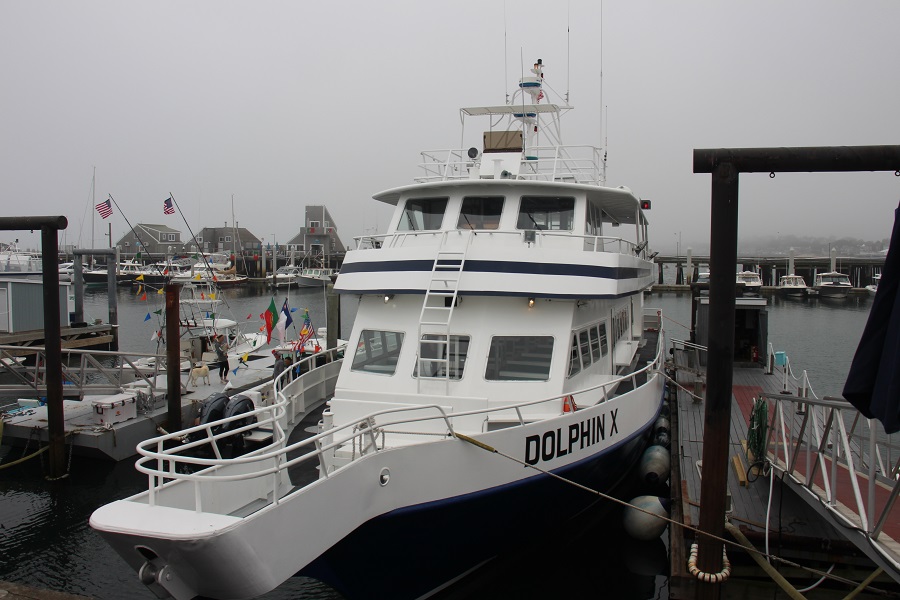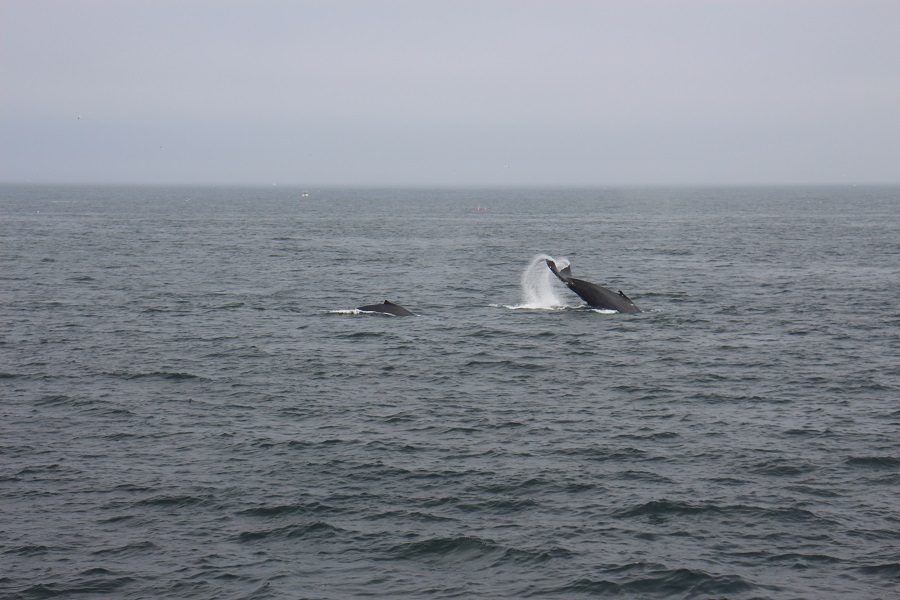PROVINCETOWN — Every summer for decades, the Dolphin Fleet has taken tourists out to Stellwagen Bank, just north of Race Point, where humpback whales, minke whales, fin whales, and endangered North Atlantic right whales feed in shallow and nutrient-rich waters.
Alongside the whale watching fleet are an increasing number of small recreational boats, many displaying a reckless disregard for rules that could put the animals at risk, longtime whale watchers say.
“While we are here studiously obeying the guidelines, they are zipping around,” said naturalist and Independent columnist Dennis Minsky, recalling the behavior of boaters he’s seen since starting with the Dolphin Fleet in 1995.
“Any idiot can get a small boat and go out there and chase whales around,” he added.
Whale watching captains need a master captain’s license issued by the U.S. Coast Guard. According to Steve Milliken, owner of the Dolphin Fleet, this requires around three years of active duty on a vessel and comprehensive training and testing. Cape Cod’s commercial whale watching companies also voluntarily follow the Whale SENSE guidelines, which require up-to-date training.

But owners of boats less than 65 feet long are not required to have a boating license, according to Provincetown Harbormaster Don German. They need only a safe boating certificate, obtained by completing an online course.
“The commercial guy and the private guy are worlds apart in experience, in knowledge, and in the ability to safely and prudently operate the vessel around the whales,” said Mike Rathgeber, who’s been a captain since 1976 and writes for the Independent.
Conflict between commercial and recreational boats is not a new development on Stellwagen, but captains and naturalists say the situation has gotten worse since Covid. Many outdoor activities exploded in popularity in 2020 and 2021, and according to the National Marine Manufacturers Association, spending on recreational boats increased 36 percent in the U.S. between 2018 and 2023.
“We’ve been way busier than ever,” said Will Sullivan, Wellfleet’s harbormaster. “There are way more calls and way more boats. The numbers have skyrocketed.”
It is also easier for small vessels to track whale watching boats with mobile apps that display real-time boat locations harvested from Automatic Identification Systems (AIS).
“It used to be that we could hide from people,” said Capt. Chad Avellar of SeaSalt Charters. Avellar has been a whale watcher “literally my whole life,” he said. His grandfather, Al Avellar, launched the whale watching industry in Provincetown in 1975.

Michelle Collins, a naturalist for Captain John Boats, said, “People can use AIS online or on an app on their phone and track us. They can also see exactly where we’ve been going.”
“I’ve seen 70 recreational boats, eight large commercial boats, and a few small private whale watch operations,” said Avellar. “It’s impossible to manage.”
Breaking the Rules
According to Jooke Robbins, director of the Humpback Whale Studies Program at the Center for Coastal Studies, the increased number of boats and improved tracking technology has resulted in a higher risk of collisions and near-collisions that could affect the whales’ feeding.
Some recreational boaters will speed toward a whale when they spot a spout, Collins said. “People start to get competitive, and it gets a little iffy,” she said.
The National Oceanic and Atmospheric Administration’s whale watching guidelines require boats to stay at least 100 feet from whales and to travel at speeds below 10 knots when whales are nearby. Commercial captains say that recreational boaters routinely break those rules.
Avellar said he has seen up to 20 recreational boats encircling a single whale, disregarding the guideline that only one boat should be “on a whale” at any given time.
NOAA’s guidelines are not actual laws, however.
Humpback whales, the most common whale species in Cape Cod’s waters, are protected only by the Marine Mammal Protection Act. That law prohibits activities that may harm or disturb them, such as pursuing, tormenting, or causing annoyance. It explicitly seeks to prevent any interference with their natural behavior patterns, including migration, breathing, nursing, breeding, feeding, or seeking shelter.
If approaching whales at high speeds harasses or disrupts their natural behaviors, this would violate the MMPA, according to Pete Decola, NOAA’s superintendent. Violators could be subject to legal penalties.

Several captains and naturalists said they have witnessed small boats disrupting whale feeding behavior by driving through “bubble clouds.” Humpback whales create these clouds to disorient shoals of fish before lunging upward and consuming their catch.
Robbins said that “one indicator of whale harassment is when boats force them to change their behavior,” which would be a violation of the MMPA.
“They spend a significant amount of time feeding, which prepares them for a long winter fast,” Robbins said. “If we disturb them extensively, it can impact their ability to gain weight and potentially have longterm effects on their reproduction cycle.”
“I’ve seen older whales with more experience actually abandon a bubble cloud if a boat gets too close,” said Regina Asmutis-Silvia, executive director for North America at Whale and Dolphin Conservation. “It isn’t good, because you don’t want to disturb them to the point where they can’t eat,” she said.
Collins said that calves are especially vulnerable, because “they are pretty inexperienced and curious.”
Both Collins and Milliken said they have witnessed people jumping into the water while being dangerously close to a whale.
“Humpbacks will kick the water, creating bubbles,” Collins said. “I saw somebody jump in the water. That’s the number one behavior I do not want to be close to them for. Their tails are extremely powerful, and they’re focusing on eating. They’re not focusing on you at all.”
“I’ve seen people jump in,” Milliken said. “They could get killed.”
Commercial whale watch boats sometimes attempt to communicate the danger to small recreational vessels, but they frequently encounter hostile responses.
“People don’t always have their radios on,” said Collins. “Sometimes we have to use the microphone system. You have people who will make obscene gestures and want nothing to do with you.”
“Maybe somebody out there really wants to learn,” said Rathgeber, “but I have found the vast majority just give the third finger.”
Robbins urged prospective whale watchers to consider their priorities. “Let’s make sure the whales’ experience is the first thing you’re worried about,” she said.
Editor’s note: Because of a reporting error, an earlier version of this article, published in print on July 13, incorrectly described Mike Rathgeber. He has been a captain since 1976 but not of whale watch vessels since that year.



